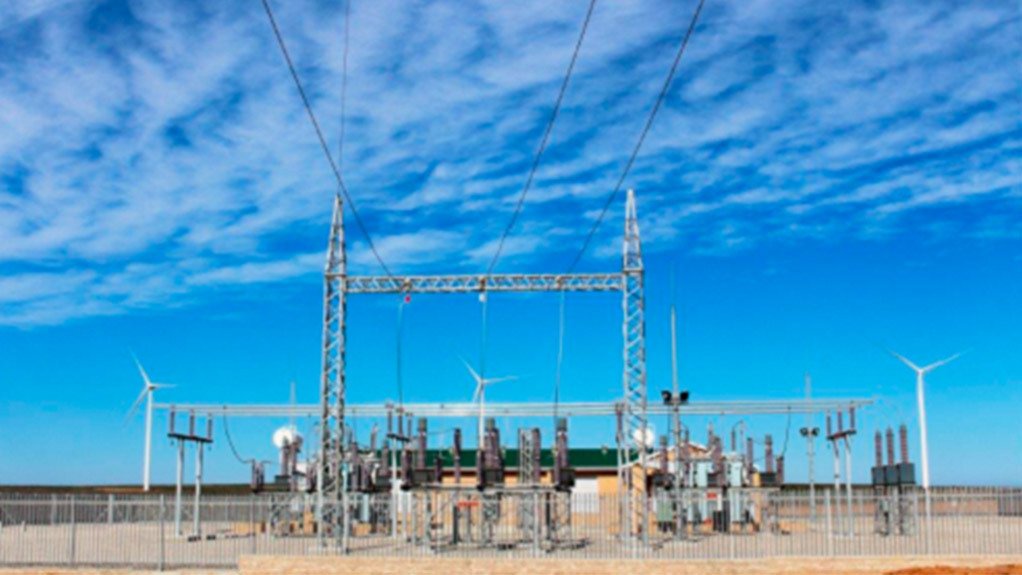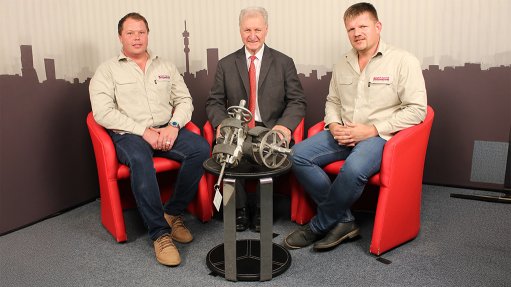Curtailment framework in play for current renewables bidding round, Ramokgopa confirms
Electricity Minister Kgosientsho Ramokgopa and the Independent Power Producer Office (IPPO) have both confirmed that the curtailment framework outlined by Eskom in January is immediately available to wind IPPs preparing to bid under Bid Window Seven (BW7) of South Africa’s public renewables procurement programme, launched in December.
Published as an addendum to the latest Generation Connection Capacity Assessment (GCCA 2025), the framework states that 3 470 MW of additional grid capacity to connect wind generation will be made available by accepting a “reasonable share of no more than 10% of curtailment”.
Curtailment is defined in the document as the controlled reduction of the output of renewable energy plants as a system operator response to transmission capacity constraints.
It adds that 2 680 MW of this capacity is available in the Western Cape and 790 MW in the Eastern Cape – provinces that together with the Northern Cape were shown in the original GCCA as having no remaining grid capacity to connect new generation.
The absence of a curtailment framework during BW6 meant that none of the wind projects that had been vying for a 3 200 MW allocation advanced to preferred-bidder status.
In his latest briefing on the implementation of the Energy Action Plan, Ramokgopa said that Eskom’s January statement indicated that the capacity was “immediately available”.
Likewise, the IPPO told Engineering News that, while it was not able to comment in detail given that a procurement process was under way, the release of the GCCA 2025 addendum had unlocked additional grid capacity for wind projects.
“This enables the department to award wind projects within the Eastern and Western Cape in alignment with the provisions of the request for proposals.”
The confirmation is also in line with a statement made following the most recent meeting between President Cyril Ramaphosa and his Cabinet members with senior business leaders, in which it was stated that Eskom and the National Energy Regulator of South Africa should ensure that grid capacity is available for the full allocation outlined in BW7.
Government is seeking to procure 3 200 MW of wind and 1 800 MW of solar photovoltaic capacity through the round.
Meanwhile, Ramokgopa reported that he would meet with the National Transmission Company South Africa (NTCSA) board on March 12 to discuss options for private sector participation in the roll-out of grid capacity in advance of the schedule outlined in the current Transmission Development Plan (TDP).
At the meeting, the work that had been done regarding a possible role for the private financing, construction and operation of additional grid infrastructure would be canvassed with the NTCSA, which had overall responsibility for grid and system operations.
Ramokgopa said that given Eskom’s balance sheet pressures and the “ticket size” of the projects, external financing could help play a role in accelerating the TDP, particularly in the Northern Cape, Eastern Cape, and Western Cape.
Eskom has indicated that it has funding available for the first three years of the TDP, during which only 1 675 km of line is planned for construction, leaving the lion’s share of 14 218 km proposed for construction by 2032 to be implemented in the latter five years.
He said the Ministry would share its proposals with the NTCSA having studied various options from peer countries, which had been tailored to South Africa’s conditions.
The idea was then for the NTCSA to champion the concept of private financing in a way that met its needs and the needs of the system.
“I'm confident there will be symmetry in relation to the need for us to access that private financing, but it's now about how you do it.”
Article Enquiry
Email Article
Save Article
Feedback
To advertise email advertising@creamermedia.co.za or click here
Comments
Press Office
Announcements
What's On
Subscribe to improve your user experience...
Option 1 (equivalent of R125 a month):
Receive a weekly copy of Creamer Media's Engineering News & Mining Weekly magazine
(print copy for those in South Africa and e-magazine for those outside of South Africa)
Receive daily email newsletters
Access to full search results
Access archive of magazine back copies
Access to Projects in Progress
Access to ONE Research Report of your choice in PDF format
Option 2 (equivalent of R375 a month):
All benefits from Option 1
PLUS
Access to Creamer Media's Research Channel Africa for ALL Research Reports, in PDF format, on various industrial and mining sectors
including Electricity; Water; Energy Transition; Hydrogen; Roads, Rail and Ports; Coal; Gold; Platinum; Battery Metals; etc.
Already a subscriber?
Forgotten your password?
Receive weekly copy of Creamer Media's Engineering News & Mining Weekly magazine (print copy for those in South Africa and e-magazine for those outside of South Africa)
➕
Recieve daily email newsletters
➕
Access to full search results
➕
Access archive of magazine back copies
➕
Access to Projects in Progress
➕
Access to ONE Research Report of your choice in PDF format
RESEARCH CHANNEL AFRICA
R4500 (equivalent of R375 a month)
SUBSCRIBEAll benefits from Option 1
➕
Access to Creamer Media's Research Channel Africa for ALL Research Reports on various industrial and mining sectors, in PDF format, including on:
Electricity
➕
Water
➕
Energy Transition
➕
Hydrogen
➕
Roads, Rail and Ports
➕
Coal
➕
Gold
➕
Platinum
➕
Battery Metals
➕
etc.
Receive all benefits from Option 1 or Option 2 delivered to numerous people at your company
➕
Multiple User names and Passwords for simultaneous log-ins
➕
Intranet integration access to all in your organisation





















